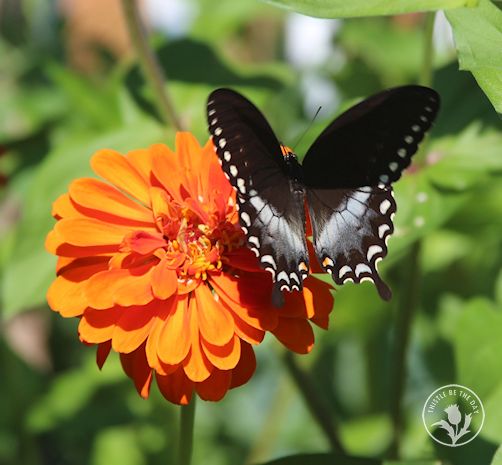When I think of a meadow, I often imagine vast open grasslands sprinkled with wildflowers, just like I used to explore when I was a child. I always admired these beautiful areas and appreciated them for all that they offered local wildlife. Until recently, having a meadow on my property was a dream, as I never imagined my suburban ½ acre property large enough to support one. That is until I picked up a copy of Mike Lizotte’s book “Mini Meadows: Grow a Little Patch of Colorful Flowers Anywhere Around Your Yard.” His definition of a meadow is vastly different. He believes it can be any size (even as small as a planter box) as long as it has blooming flowers and a loose naturalistic style that is informal with minimal maintenance. I liked his philosophy!

The book sites several reasons why people should consider planting a mini meadow, including to cultivate beauty, conserve water, mow less, tackle trouble spots in the yard such as hills and hellstrips, attract birds, and to help the pollinators. I was most interested in attracting pollinators and birds, as well as adding color to my landscape. The book gives instructions and tips for creating a mini meadow from planning, site location, soil prep, and planting and offers suggestions for which varieties of flowers to grow. I was intrigued by the concept and decided to dig in and grow my own mini meadow.

The first step was to pick a site. I decided on two locations in my yard, one was a dedicated bed in my vegetable garden, and the other was a small spot in my peony garden. In early spring, I prepped the sites by amending the soil and clearing the beds, and when the time was right, I planted my seeds. According to Lizotte, a mini meadow can contain both annual and perennial plants. In my established perennial bed, peonies and irises already flourished, but the bed lacked color once these early blooming perennials had faded. I decided to add hostas that I divided from another bed and annuals for more color. I chose to plant zinnias, sunflowers, cosmos, dill, and nasturtium in my mini meadows as they are some of my favorite annuals, and they also attract pollinators.

Over the next few months, I watched as my mini meadows grew. I was ecstatic when the seedlings popped out of the soil and when the first bloom opened. Though the mini meadow in my peony garden is small, I love how it offers both color and flowers for pollinators long after the peonies and irises have faded.



The mini meadow in my vegetable garden is more substantial, offering plenty of blooms for pollinators besides those on my vegetable plants. I enjoy growing flowers and vegetables together in the garden, as it combines two of my loves in one place.





As a bonus, my mini meadows also serve as cutting gardens where I can pick bouquets until my heart’s content. There are few things as satisfying as cutting a fresh bouquet of home-grown blooms for the dinner table. The zinnias, sunflowers, and cosmos I planted flower all summer long in the garden and make beautiful, long-lasting bouquets for indoor enjoyment.




“And what about the pollinators?” you might ask. Well, I am happy to report that my mini meadows have attracted many pollinators to the garden. I have seen bees aplenty, several species of butterflies, and hummingbirds all happily gathering nectar. With habitat loss being a major contributor to pollinator decline, it made sense to provide food sources in my landscape. By simply planting a mini meadow, I was thrilled that I could help pollinators, a cause that is near and dear to my heart.



Throughout the summer, I have thoroughly enjoyed my mini meadows. They have entertained as I watch the many butterflies, bees, and hummingbirds flit from bloom to bloom and have added beauty to my landscape with their many colorful flowers. Now that I’ve experienced the joys of planting a mini meadow, I know that I can never go back. From here on out, I will plant at least one mini meadow in my landscape each season, both for the pollinators and me.

Source: Mini Meadows: Grow a Little Patch of Colorful Flowers Anywhere Around Your Yard by Mike Lizotte


Love your pictures
LikeLiked by 1 person
Thank you so much! I find flowers to be very photogenic!
LikeLike